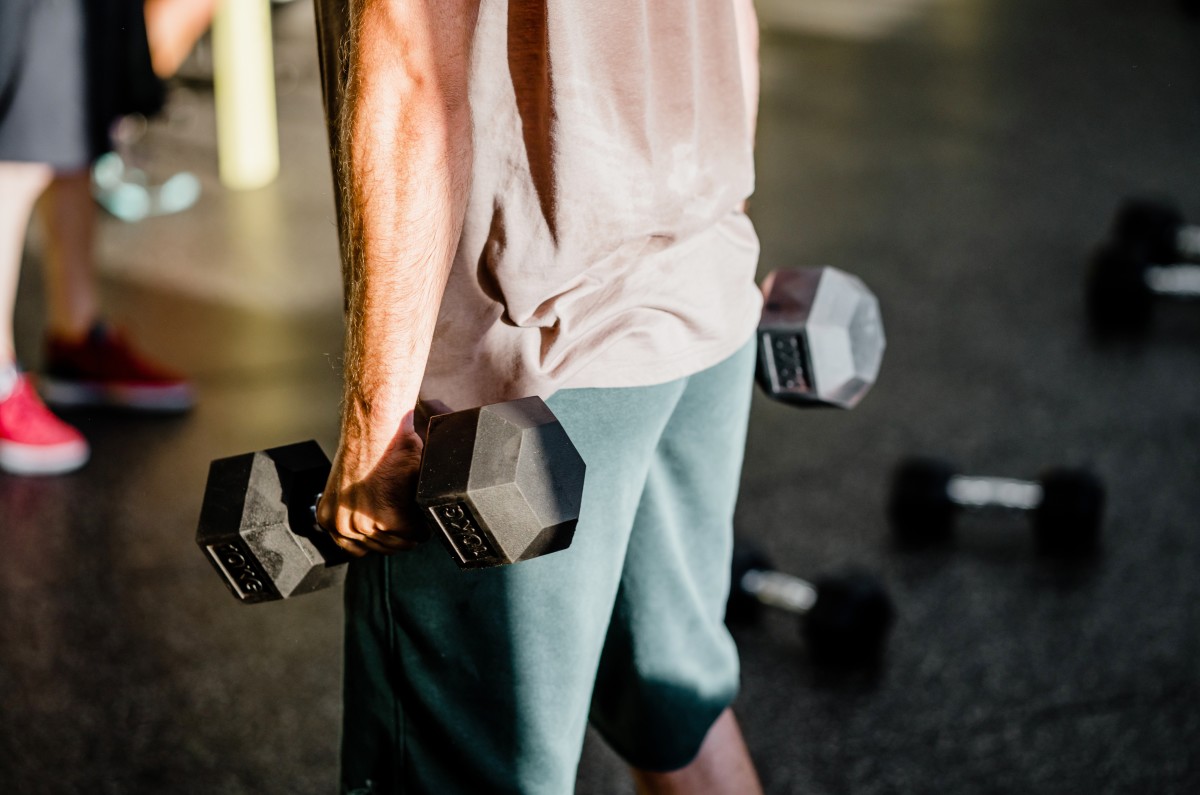The Secret Weapon for Longevity Most Men Overlook
This old-school exercise is the key to staying strong and fit well into old age—no fancy equipment needed.

Most guys think that to achieve longevity, they need to lift heavier, eat clean, and squeeze in more cardio. And while those habits are certainly important, there’s one old-school, underrated move that also deserves a spot in your routine: the farmer’s walk.
While the farmer’s walk doesn’t look flashy or trend on social media, science backs what strongmen and old school lifters have known for decades—carrying heavy weight is one of the best ways to improve grip strength and help your body fight back against aging.
Studies show that grip strength is directly tied to longevity, cardiovascular health, and cognitive performance later in life. A 2015 study published in The Lancet found that lower grip strength was more predictive of death than blood pressure.
That’s why experts like Will Haas, MD, founder of VYVE Wellness, praise the farmer’s walk for its longevity-boosting benefits. “The farmer’s walk is an exercise longevity hack as it trains the entire body, improves metabolic and cardiovascular health, and builds mental toughness,” Haas explains. “Without requiring long sessions, farmer walks increase aerobic capacity and anaerobic threshold. At the same time, they help maintain lean muscle mass and insulin sensitivity, both critical for healthy aging.”
Below, we break down everything you need to know about this overlooked cornerstone of strength—why it matters, how to do it right, and how it can help you stay strong, balanced, and resilient well into your later years.
Why Grip Strength Matters More Than You Think
Grip strength isn't just about having a firm handshake. It’s a window into your nervous system, testosterone levels, and overall health and vitality.
“As we age, there isn’t a more important contributor to healthspan than muscle mass and grip strength,” says Darshan Shah, MD, a surgeon and co-founder of Next Health. “Grip strength keeps us mobile, protects our bones, and supports a healthy metabolism. People with poor grip strength have a greater risk of falling, especially after the age of 70, which can lead to fractures and a rapid decline in health.”
Research backs up Shah’s claims. A 2019 meta-analysis published in Clinical Interventions in Aging concluded that grip strength could predict disability, cognitive decline, and mortality risk. Translation? If you want to age well, boosting your grip strength should be a top priority.
Far from just building grip strength, the farmer’s walk activates your entire nervous system and delivers plenty of other longevity benefits. Gabrielle Lyon, DO, a functional medicine physician and founder of the Institute for Muscle-Centric Medicine, says, “The farmer’s walk is deceptively simple yet incredibly powerful, offering a near-complete stimulus for the entire body. For men who are at increased risk of developing insulin resistance, sarcopenia, and cardiovascular disease as they age, this type of functional, full-body load-bearing movement provides direct protection against many of the hallmarks of aging.”
Multiple studies link loaded carries to improved core strength, posture, bone density, and balance, all of which are crucial factors in helping prevent falls and injuries as you get older.
Building stronger grip strength and core stability through carries can also boost physical performance in bigger lifts like deadlifts, bench, and overhead presses. Think of the farmer’s walk as the foundation that makes everything else you do in the gym more effective.
How to Do Farmer’s Walks the Right Way
Farmer’s walks sound so simple: You just pick up heavy weights and walk. But perfecting the finer points of this move can be the difference between building a body that’s strong for life and one begging for injuries.
Haas advises, “Keep your posture tall and packed. That means your head and eyes should be forward (not down). Your shoulders should be back and down—imagine tucking your shoulder blades into your back pockets.”
“The number one cue for effective carries: stand tall and walk with intention,” Lyon says. “This keeps your thoracic spine neutral, your core braced, and your gait upright, which are essential for translating the strength benefits to real-world activities and injury prevention.”
Expert Tips for Improving Grip Strength with Farmer’s Walks
- Choose a weight that’s challenging but doesn’t break your form or risk injury.
- Walk slowly and intentionally. (No speed-walking!)
- Keep your core and glutes flexed during the movement.
- Breathe slowly and steadily.
- Finish each carry feeling like you could’ve gone a little further.
If you’re new to carrying heavy weights, consider using hex dumbbells or farmer’s carry handles. More experienced lifters might level up with kettlebells, trap bars, or heavy sandbags to challenge their stability and boost core strength.
Related: Want to Build Strength Fast? This Science-Backed Shortcut Might Shock You
How Heavy and How Often?
Haas recommends aiming high with your weight, but only if your form is on point. “Experienced exercisers should aim for 50 to 75 percent of their body weight per hand. Increase the weight only if you maintain perfect posture,” Haas advises. For example, if you weigh 180 pounds, you should carry 90 to 135 pounds in each hand.
Lyon offers a more detailed breakdown: “For most men, [doing farmer’s walks] two or three times per week is a great starting point. Carries can be included as part of a strength session (as a finisher), on a conditioning day, or even during a 10-minute standalone ‘loaded walk.’ The goal is to challenge your grip, core stability, and gait mechanics—not to push so hard that your form breaks down.”
Here’s a simple progression plan:
- Beginner: Perform three sets of 30-second carries with moderate weight.
- Intermediate: Complete three sets of 45-second carries with a heavier weight.
- Advanced: Do four to five sets of 60-second carries using a challenging weight or uneven implements (like kettlebells or sandbags).
For a next-level challenge, try programming the farmer’s walk into circuits. For example:
- 30-second farmer’s walk
- 10 pushups
- 10 goblet squats
- 30-second rest
- Repeat for three to five rounds. Rest for 60 to 90 seconds between rounds.
Common Farmer’s Walks Mistakes to Avoid
Like any other effective exercise for building strength and longevity, make sure you prioritize proper form when doing the farmer’s carry.
“The most common mistake is treating carries like an afterthought—just grabbing heavy weights and trudging around without focus,” Lyon explains. “This usually leads to sloppy posture, rounded shoulders, flared ribs, or excessive leaning and wobbling.”
Another common error is using too much weight. “Carries are brutally effective even at moderate weights when performed with precision,” Lyon says. “Also, many men forget to breathe properly, holding their breath during the entire carry. Loaded carries are about control under stress, not just moving weight from point A to B.”
If you’re serious about longevity, the farmer’s walk might be the missing link in your training. So go grab some heavy weights, stand tall, and walk like you mean it.
Your 80-year-old self will thank you.















































































